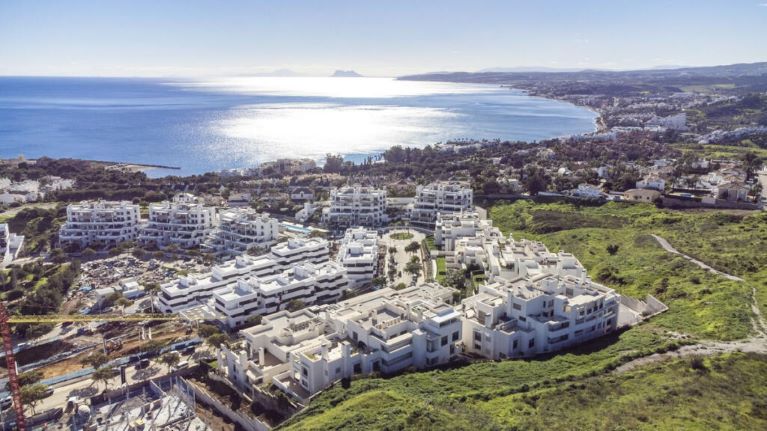What could the new Spanish property tax mean for UK buyers?
With its sunny weather and rich culture, lively coastal resorts and quiet inland villages, it’s easy to see why Spain has long been a top destination for British buyers looking to purchase property overseas.
Recently, the Spanish government announced its plans to introduce new property taxes for non-EU residents. This could potentially make it more expensive for UK buyers to purchase property in Spain. However, the key word here is “could” – these proposals are still far from becoming law, and there are question marks over whether the taxes will be introduced at all.
Here we’ll explain what these proposed changes might mean if you’re thinking about buying a property in Spain, along with how you can prepare for the proposed changes.
What tax changes are being proposed?
The Spanish government has announced plans to introduce a new property tax that could affect buyers from countries outside the European Union, including the UK. The proposal suggests a tax of “up to 100%” on property purchases by non-EU citizens, but its basis is unclear. It could mean 100% of the purchase price, or a 100% increase on the existing foreign buyer tax (usually between 6 and 12%). The rates paid vary by region, as Spanish property taxes are regionally controlled.
But non-EU buyers are far from in the majority, and made up less than 5% of all property transactions in Spain in 2023.
When might these changes happen?
At the moment, there’s no fixed timeline for implementing the new property tax. The proposal needs to work its way through the Spanish parliament before it can become law, and many details are still to be confirmed. The government has indicated that more detailed studies will take place before final proposals are published. This process could take several months or even longer, given the complexity of property tax legislation and the need for regional consultation.
What does the tax mean if I’m thinking of buying in Spain?
The proposed taxes are not in effect yet – this means the standard transfer tax will still apply to your purchase. Moreover, the Spanish government’s proposal faces several challenges which may prevent it from becoming law. As property transfer taxes are controlled by individual regions, any changes would need regional approval. There are also questions about whether such a policy would be compatible with existing laws around fair taxation, and international investment.
There are some options worth considering if you’re already planning to buy in Spain. If you’re already in the process of buying a home in Spain, you might want to see if there’s any way you can speed up the conveyancing process, to give yourself the best possible chance of securing the home you want before any future taxes might be introduced. And if it’s something you’re thinking about doing in future, it could be an idea to bring your plans forwards.
We spoke to Ted Rosén from Habeno, a company that connects buyers with mortgage options when they’re thinking about purchasing property overseas. He says: “Since the announcement, we’ve seen more UK buyers pushing ahead with purchases, and interest in Spanish property remains strong. While tax policies vary by region – meaning some areas may choose to resist these changes to stay competitive – there’s also uncertainty over whether the tax will actually come into effect due to legal and economic hurdles.
“We’ve seen that some buyers are exploring residency options to navigate any potential tax changes, but overall, the demand for property in Spain is still high, driven by both its lifestyle appeal, and investment potential.”
What’s the current tax situation?
At the moment, when buying a home in Spain, you can expect to pay transfer tax (ITP) in the region of 10%, though this varies depending on what part of the country the property is in. Each autonomous region in Spain sets its own property transfer tax rates and thresholds, which means purchase costs can vary depending on location.
For off-plan or new-build properties, many buyers will pay IVA (Spain’s equivalent of VAT) at 10%. Some regions offer reduced rates for first-time buyers, young purchasers, or those buying in rural areas.
The tax system also varies depending on the type of property and its use. Primary residences might qualify for certain tax benefits, while investment properties or holiday homes may face different tax treatment. Some autonomous regions have additional local taxes or surcharges, that need to be considered in the overall purchase cost.
After purchasing a property, non-resident owners must pay annual non-resident income tax. For instance, on a property valued at €200,000, this tax would amount to around €200 per year.
Are there other ways to buy property in Spain?
UK buyers may want to explore different approaches to property ownership in Spain. Some could choose to become residents before purchasing, while others might look at different property ownership structures, such as company ownership, or shared ownership schemes. However, it’s important to get professional advice about these options, as they each come with their own implications for tax and residency status.
The property market in Spain is diverse, and different regions offer varying opportunities. While popular coastal areas might be more affected by any new tax measures due to their high proportion of foreign buyers, inland areas and smaller towns may choose to offer different opportunities and tax arrangements.
What are the next steps?
If you’re interested in buying property in Spain, it’s a good idea to stay informed about these potential new taxes while continuing with your plans. Working with experienced legal and financial advisors who understand both UK and Spanish property markets can help you navigate any changes in tax law. Many Spanish lawyers specialise in helping foreign buyers and can provide up-to-date advice on tax implications.
Also consider researching different regions of Spain, as tax rates and property prices can vary significantly. Popular holiday destinations may have higher purchase costs but stronger rental potential, while inland areas might offer better value for those looking for a permanent residence.
Although the proposed tax changes are significant, they are still just proposals, and may be modified before becoming law – if they become law at all. The key is to make informed decisions based on current regulations, while staying informed of potential future changes.
The header image for this article was provided courtesy of Choice Property, Mijas Costa.
Please note: Your home may be repossessed if you do not keep up repayments on the mortgage. Rightmove is not authorised to give financial advice; the information and opinions provided in these articles are not intended to be financial advice and should not be relied upon when making financial decisions. Please seek advice from a regulated mortgage adviser.



